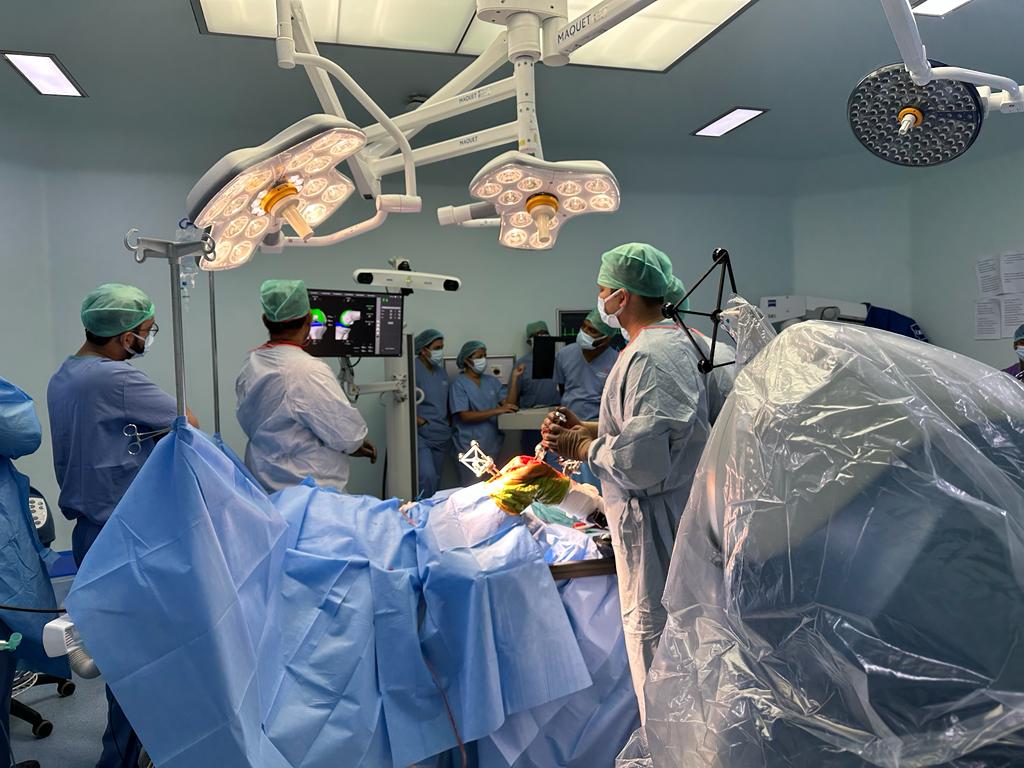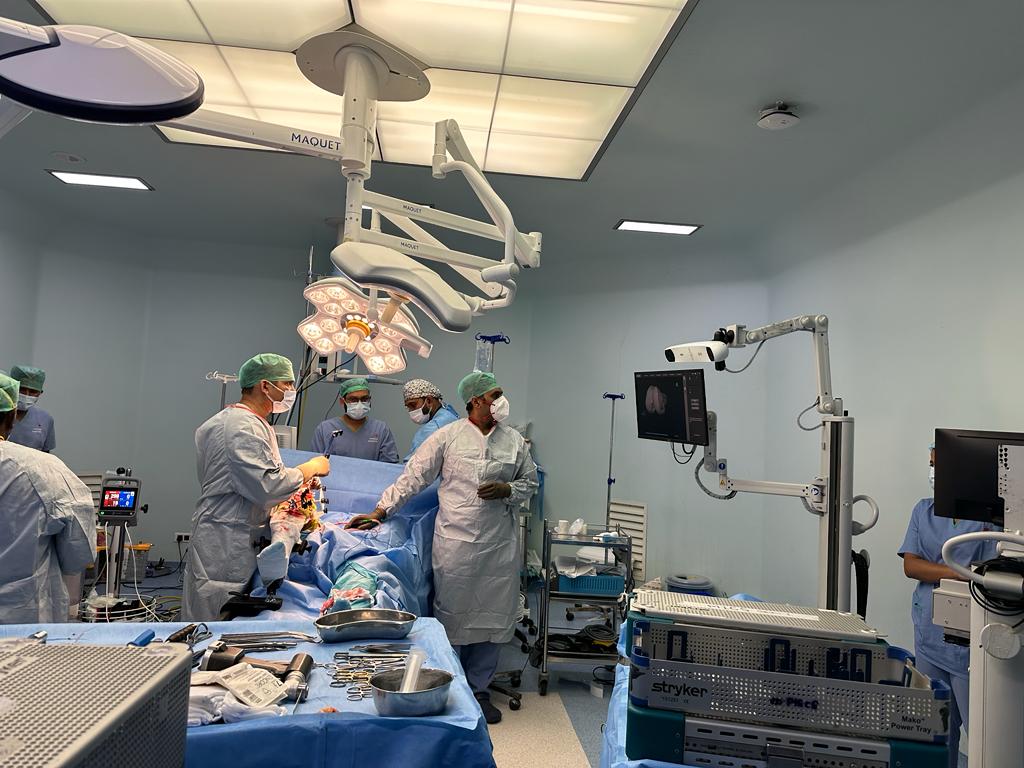Robotic Total Knee Replacement

What is Robotic Total Knee Replacement?
Robotic Total Knee Replacement in Koramangala Bangalore is an advanced technique that combines the precision of robotic technology with traditional joint replacement surgery. During the procedure, a surgeon uses a robotic arm system to assist in replacing a damaged knee joint with an artificial implant.
The technique typically involves the following steps:
- Preoperative planning: Prior to surgery, a CT scan of the patient’s knee is obtained, allowing virtual 3D modeling of the joint. This helps create a personalized surgical plan tailored to the patient’s anatomy.
- Surgical preparation: The surgeon prepares the knee joint by removing damaged cartilage and bone from the femur (thighbone) and tibia (shinbone) to accommodate the implant.
- Robotic assistance: Once the joint is prepared, the surgeon uses a robotic arm system that provides real-time feedback and assists in accurately positioning the implant components based on the preoperative plan. The robotic arm is surgeon-controlled but offers enhanced precision.
- Implant placement: After positioning the components, alignment is verified using computer guidance, and the artificial components are securely fixed to the bone.
- Closure: The incision is closed, and the patient enters the postoperative recovery phase.

Why Robotic Total Knee Replacement (TKR)?
The goals of robotic TKR surgery include improved implant positioning accuracy, enhanced implant longevity, and better patient outcomes such as reduced pain and faster recovery.
With each Robotic Total Knee Replacement in Sarjapur Road Bangalore success story, we are reminded of the incredible progress humanity is making. Robotic Joint Replacement is not just a procedure, but a symbol of hope and endless possibilities.
FAQs
When Dr Rewat suggests a Robotic Total Knee Replacement, you will most probably have a lot of queries.
Here, he addresses the most common queries we get from our patients.
Do I really need surgery?
Surgery is generally recommended when pain becomes severe, anti-inflammatory medications and lifestyle modifications are no longer effective, daily activities are restricted, and dependence on others has increased. Other indications include deformities such as bow legs or knock knees.
What happens during surgery, and how long does it take?
- An incision is made over the front of the knee to expose the damaged joint.
- The standard incision length is approximately 4-5 inches.
- Damaged joint surfaces are reshaped.
- The damaged tissue is replaced with metal and polyethylene components.
- The components form an artificial joint that mimics natural knee movement.
- Most knee replacement procedures take about 30 to 45 minutes.
What are the knee implants?
Knee implants are made of metal and medical-grade plastic known as polyethylene.
Dr Rewat uses high-flexion implants that offer better stability and improved bending.
On average, knee replacements last around 25 years.
Which anesthesia will be given to me? Is it safe?
All surgeries performed under anesthesia carry some risk. These risks are minimized through a thorough pre-anesthetic evaluation and medical fitness assessment. A cardiologist’s and physician’s opinions may be obtained when required. Risks are classified as mild, moderate, or severe, and appropriate precautions are taken.
The options for TKR include:
- Spinal or epidural anesthesia
- Regional nerve block anesthesia
The anesthesia team determines the most suitable option, though most knee replacements use a combination of these techniques.
How much pain will I have after surgery?
Postoperative pain is usually minimal and well controlled by the surgical team.
A nerve block is given before surgery, and long-acting local anesthetics may be used during the procedure to provide pain relief.
At discharge, pain-relief medications will be prescribed.
After recovery, knee pain is usually much less than before surgery.
Following your doctor’s instructions and physiotherapy program is essential for optimal pain control and recovery.
Intravenous antibiotics are administered to reduce the risk of infection.
What can I expect during recovery and rehabilitation?
Most patients begin walking on the same evening with the help of a walker or crutches.
A physiotherapist will assist you with knee movements, getting out of bed, and walking, often on the day of surgery.
Hospital discharge usually occurs within 2–3 days.
Physiotherapy continues for several weeks after discharge to improve knee function.
Most patients recover within 4–6 weeks.
